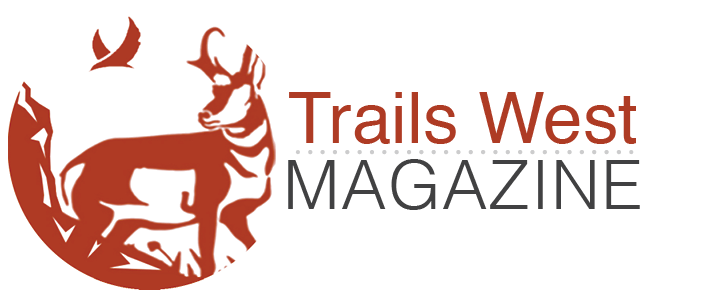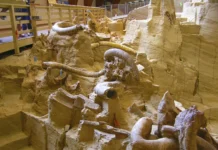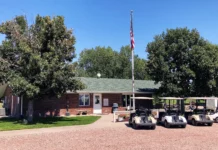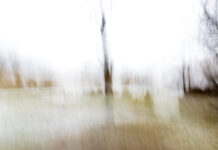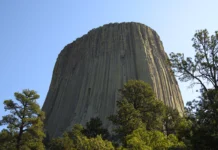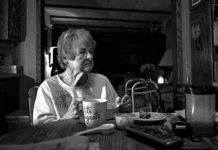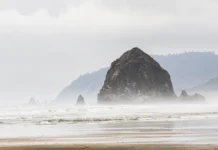| NEBRASKA |
One of North America’s most endangered plant species grows in a pocket-sized section of eastern Wyoming, western Nebraska, and central northern Colorado.
Suppose you’ve ever hiked through the high plains meadows or along the wandering streams of eastern Wyoming, western Nebraska, and central northern Colorado. You may have been lucky enough to catch sight of the Colorado Butterfly Plant (Oenothera coloradensis), a short-lived perennial herb in the evening primrose family.
Colorado Butterfly Plants were first collected near Fort Collins, Colorado, in 1894, which explains the “Colorado” part of its name. The “Butterfly” is derived from the bilaterally symmetrical — meaning that the two pairs of petals are mirror images of each other — petals resembling a butterfly’s wings. In its first year of life, it is a simple cluster of leaves. In its second year, the plant produces one to several reddish stems 50-80 cm tall (19-31 inches) and begins to flower.
From June through September, the pinkish-white flowers open in the late afternoon, bloom throughout the darkness of night, where they are pollinated by noctuid moths (an insect family which includes the widely despised but vital to our ecosystem, Miller moth), and then close at dawn. Beginning in July, the plants produce between 140 and 175 hard, nut-like fruits containing 1-4 seeds per fruit. Seed dispersal is believed to depend on flood waters moving the seeds to new locations.
Today, due to its minimal range and particular habitat needs, which consist of sub-irrigated, alluvial soils of drainage bottoms surrounded by mixed grass prairie (or, in simpler terms: the wetland area between the creek and the prairie), the Colorado Butterfly Plant is found only in a 1700 acre area in southeastern Wyoming, western Nebraska, and northeastern Colorado, between the elevations of 5000 to 6400 feet. In Nebraska, where the plant is listed as endangered, it is found only in a small section of Kimball County near Oliver Reservoir and along the floodplains of Lodgepole Creek.
For plant species, Endangered Species Act protection is only applicable on federal land and does not apply to private land. The only federal land in Wyoming where Colorado Butterfly Plant is found is F. E. Warren Air Force Base near Cheyenne, and so the base has become a center for research and protection. Although F. E. Warren is relatively small regarding military installations (630 acres), it contains three sites suitable for the selective nature of the Colorado Butterfly Plant. It supports a large population of between 6000 and 8000 plants.
The Air Force has been taking steps since 1984 to monitor and protect this delicate species. Every year, field botanists walk through the riparian zones of the base and count every Colorado Butterfly Plant they can find. It’s hot, challenging, and often thankless work, but vital to conserving this rare flower.
| WE LOVE YOU 3000
In the wild, however, only fourteen known sites exist where Colorado Butterfly Plant is still growing, and within these small populations, only an estimated 3000 plants are left.
Without better land management practices, including the limit of broadleaf herbicide use, haying in late summer to give the flowers a chance to produce seeds, shorter-term livestock grazing, and control of urban expansion, it is unlikely that Colorado Butterfly Plant will survive much longer in Nebraska, where the plant is still listed as endangered, despite being removed from the Federal List of Endangered and Threatened Plants in 2019. Control of invasive plant species such as Canada thistle is also critical, as Colorado Butterfly Plant cannot compete for survival against many of these invaders.
| IN THE FIELD
Despite our photographers attempting to find and document the plant for three days, there are not enough photographs of this unique plant to create a photo gallery of images. Most of the remaining plants live on private, inaccessible, and protected lands in southwestern Nebraska, southeastern Wyoming, and central northern Colorado. We’re still looking.
| CREDITS & RESEARCH
If you are fortunate enough during your travels through Nebraska to spot one of these nearly extinct flowers, be sure to take photos, note the location (use the GPS on your phone), and contact Nebraska Game and Parks at 402-471-0641.
- http://plantsandrocks.blogspot.com/2014/08/colorado-butterfly-plant-and-us-air.html
- https://www.federalregister.gov/documents/2019/11/05/2019-24124/endangered-and-threatened-wildlife-and-plants-removing-oenothera-coloradensis-colorado-butterfly
- USFWS Mountain-Prairie
- Nebraska Game and Parks
Story by: Kathrine Rupe
Photography by: Sarah Yakawonis
Photography by: Julie Reeves / USFWS
